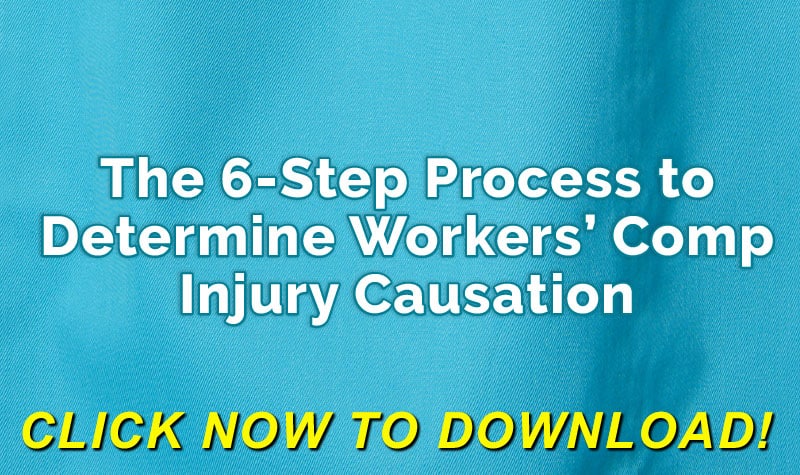
Among the steps that will help curb the opioid epidemic in this country is educating patients. Most people are not fully aware of the effects of these drugs or that they are not the only option for treating pain.
“I’ve always felt that if patients knew all the risks, beyond those of addiction, many of them would opt for one of the other therapies,” said Phil Walls, Chief Clinical Officer of myMatrixx. In his webinar series on patient advocacy and opioid therapy, Walls stresses the idea of arming injured workers with full knowledge of the side effects and warnings before starting them on opioids. He suggests providers use information available on the internet from the federal government to begin a dialogue with injured workers.
Many Risks of Opioids
While the risks of addiction, overdose, and death have been well publicized with prolonged use of opioids, there is also the danger of tolerance. Tolerance means the person will need to take more of the medicine to get the same pain relief; and a higher risk of physical dependence, along with withdrawal symptoms is present if the drugs are stopped.
There are many other, less publicized risks from opioids. The Centers for Disease Control and Prevention outlines several of them in its Prescription Opioid Factsheet for Providers:
- Increased sensitivity to pain
- Constipation
- Nausea, vomiting, and dry mouth
- Sleepiness and dizziness
- Confusion
- Depression
- Low levels of testosterone that can result in lower sex drive, energy, and strength
- Itching and sweating
The risks are even higher when certain other conditions are present. Sleep apnea, for example, heightens the risk of side effects, as does pregnancy, depression, and being 65 years of age or older.
Mixing opioids with other medications can be dangerous or even fatal. A cocktail of benzodiazepines — Xanax or valium — and muscle relaxants should be avoided “unless specifically advised by your health care provider,” according to the CDC.
Alternatives
“Opioids are not the first line or routine therapy for chronic pain,” the CDC explains. Research shows that other medications with far fewer side effects can be as, or more effective for pain relief if taken as prescribed. These alternatives include acetaminophen, ibuprofen, and naproxen.
Other non-medicinal treatments for chronic pain include physical therapy, and cognitive behavioral therapy (CBT). CBT is a short-term, goal-directed approach that teaches patients how to modify their thinking and behaviors to manage pain.
For injured workers who fail to get pain relief from any other measures and are prescribed opioids, nonpharmacologic therapy, and nonopioid pharmacologic therapy should be combined with them, the CDC advises. Opioid therapy should be considered “only if expected benefits for both pain and function are anticipated to outweigh risks to the patient.”
Discussion Starters
In addition to the CDC, other government entities also have valuable information available on the web. One is the Food and Drug Administration.
“How does the FDA approach patient advocacy with regard to opioids? They arm the patient with questions to ask their provider,” Walls explains. “This is a very interesting approach because the FDA is empowering patients to take charge of their own care.”
The FDA document, What to Ask Your Doctor Before Taking Opioids, can be a great way to open the dialogue about opioids and their alternatives. Among the FDA’s suggested questions are:
- Why do I need this medication — is it right for me? Topics under this general heading that should be addressed between the provider and injured worker are:
- How long do you expect it to last?
- What medication are you giving me?
- If it’s an opioid, are there non-opioid options that could help with pain relief while I recover?”
- How long should I take this medication? The FDA suggests patients ask their providers to prescribe the lowest dose and the smallest quantity for the average patient. Walls says providers should be even more vigilant, realizing that many patients are not ‘average.’ “If the patient isn’t average, that average low dose may actually be an overdose,” he says. “The only way to find the lowest possible dose is to start with one less.”
- Can I have a Rx for naloxone? This medication can reverse the effects of an opioid overdose. Walls points out that only high-risk patients should need this, in which case the provider should consider something besides opioids. Also, the injured worker’s caregiver needs to understand that naloxone takes the patient into an immediate withdrawal situation, which requires emergency care.
Summary
In addition to educating workers’ compensation stakeholders about the risks of opioids, injured workers themselves should be made aware of the facts. Information available on some government websites can help providers be prepared to have honest discussions with their patients.

Contact: mstack@reduceyourworkerscomp.com.
Workers’ Comp Roundup Blog: https://blog.reduceyourworkerscomp.com/
©2018 Amaxx LLC. All rights reserved under International Copyright Law.
Do not use this information without independent verification. All state laws vary. You should consult with your insurance broker, attorney, or qualified professional.






